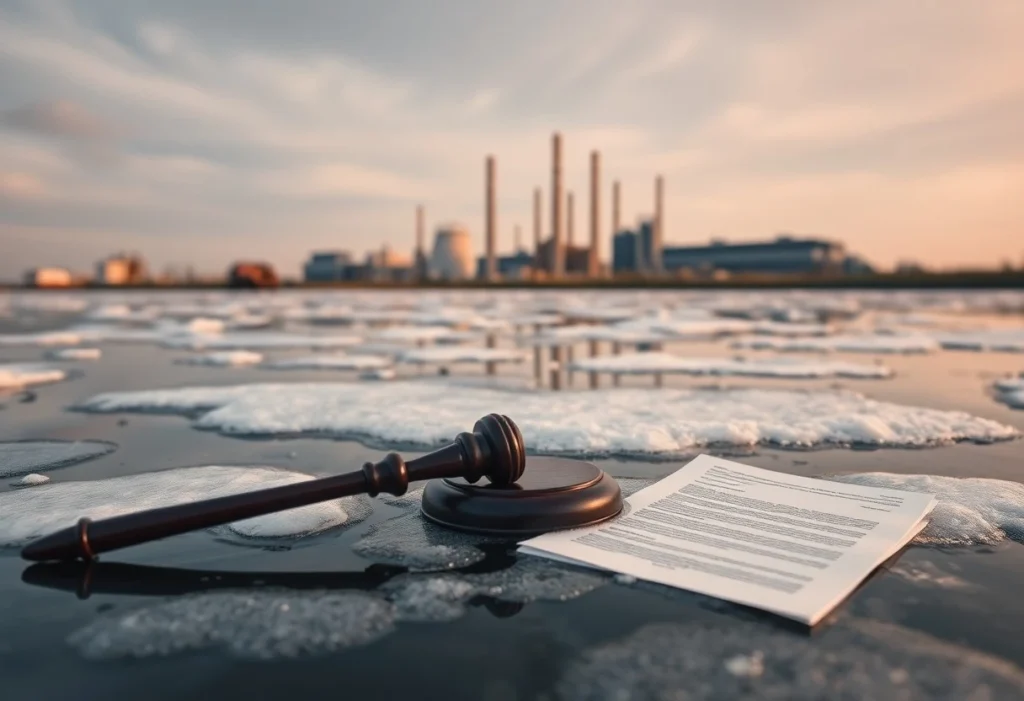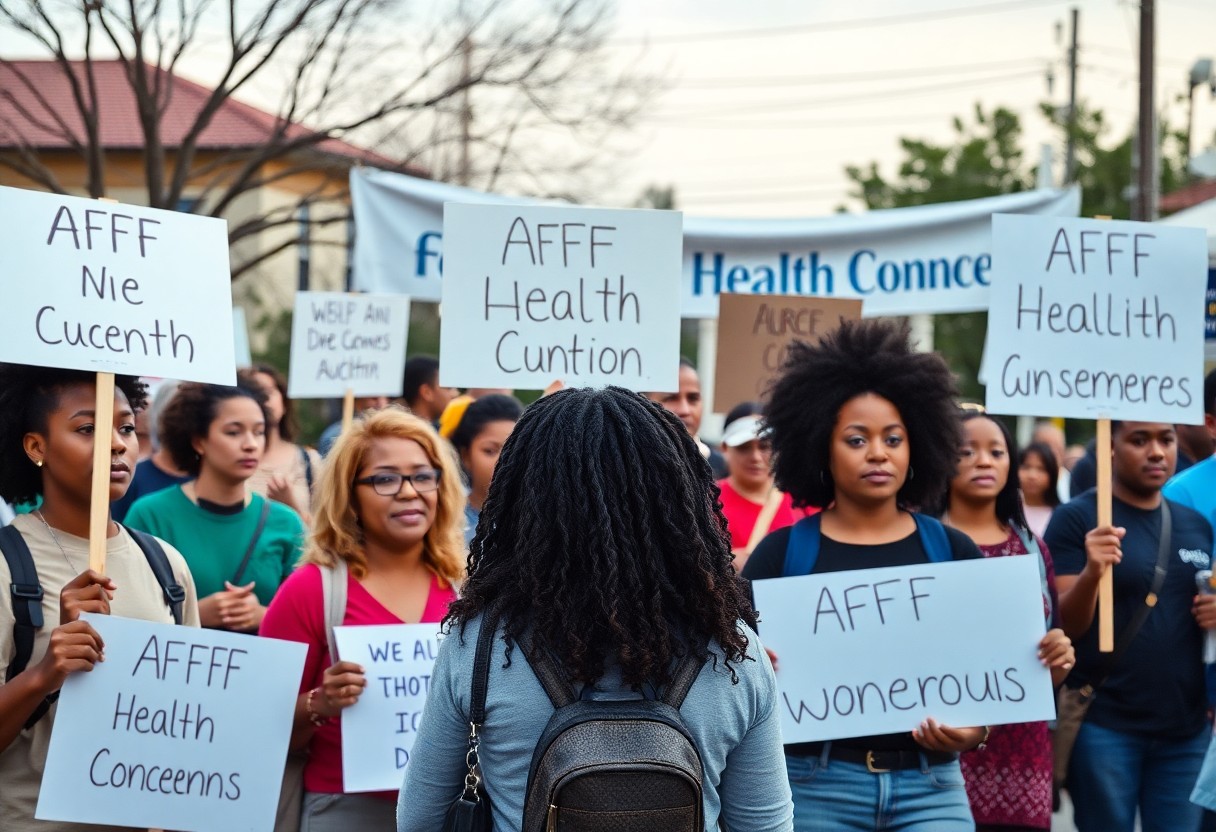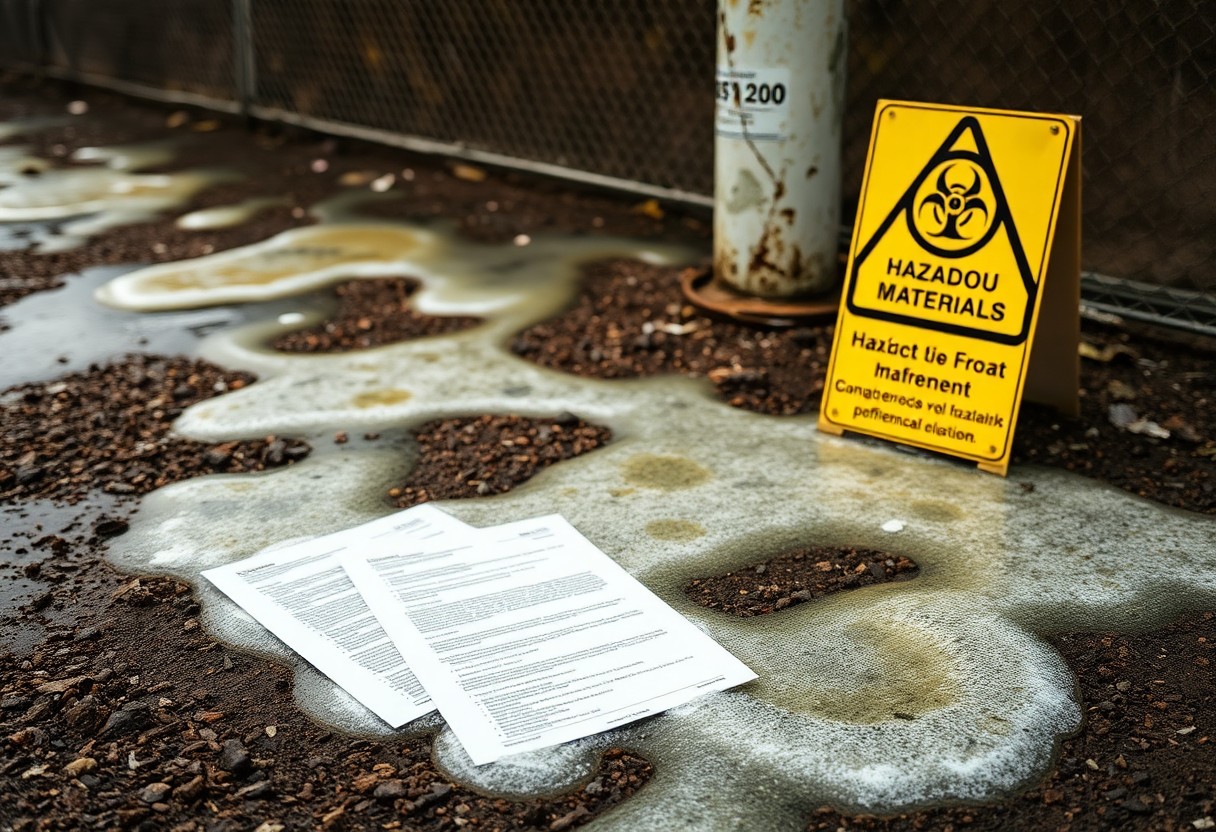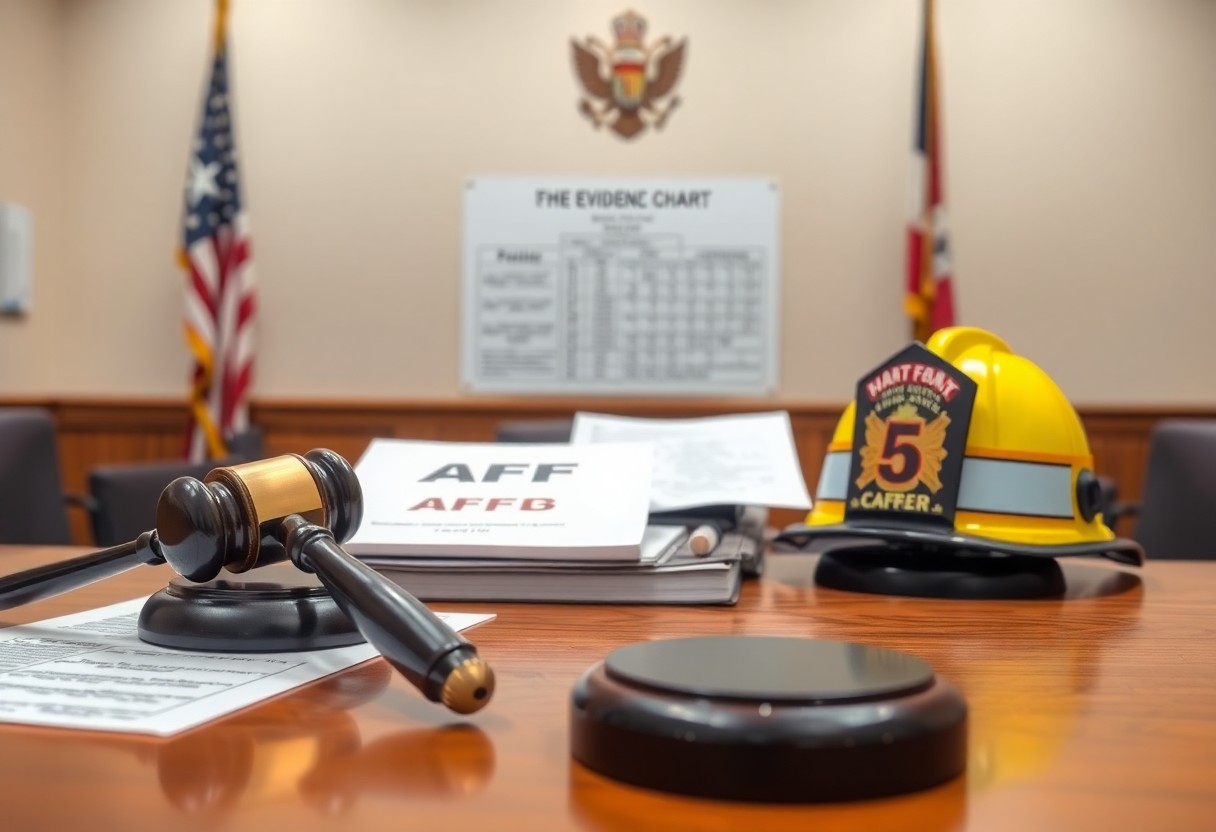Over time, the impacts of AFFF contamination have become increasingly evident, threatening both public health and the environment. In this guide, you will learn how to effectively hold chemical companies accountable for their actions. By understanding your rights and the legal avenues available, you can take meaningful steps to advocate for clean water and safety in your community. Equip yourself with the knowledge to demand accountability and foster positive change for yourself and future generations.
Understanding AFFF Contamination
Your awareness of AFFF contamination begins with recognizing its origins. AFFF, or aqueous film-forming foam, is extensively used in firefighting to suppress flammable liquid fires. However, its chemical constituents, particularly per- and polyfluoroalkyl substances (PFAS), have raised significant environmental and health concerns due to their persistence in nature and potential harmful effects on human health and ecosystems.
What is AFFF?
Understanding AFFF involves recognizing it as a fire-suppressant foam that contains imperative fluorinated compounds. Developed for use in various emergency situations, this foam creates a barrier that prevents the spread of fire. Unfortunately, the very properties that make AFFF effective in firefighting also render it problematic, as these fluorinated chemicals do not easily degrade in the environment.
Health and Environmental Risks
Even with its firefighting utility, the implications of AFFF on human health and the environment can be serious and far-reaching. Exposure to PFAS has been linked to various adverse health effects, including immune system disruption and developmental issues, making you, as a community member, need to be aware of the risks involved.
Contamination from AFFF is alarming; PFAS compounds have been connected to numerous health risks, such as increased cholesterol levels, certain cancers, and reproductive issues. Additionally, these persistent chemicals can accumulate in soil and water systems, leading to widespread environmental damage. Your well-being and that of future generations depend on understanding these risks and insisting on stricter regulations and accountability from the companies that use AFFF in firefighting practices.
Legal Framework
There’s a comprehensive legal framework designed to hold chemical companies accountable for AFFF contamination. This framework enables individuals affected by harmful substances to seek justice and compensation. You can utilize various laws and regulations to build your case while understanding your rights in the face of corporate negligence.
Relevant Laws and Regulations
Framework laws such as the Comprehensive Environmental Response, Compensation, and Liability Act (CERCLA) and the Clean Water Act serve as vital tools for addressing pollution and holding companies accountable. These regulations enable you to seek remediation and enforce compliance, ensuring that responsible parties must address harm caused by their substances.
Role of Regulatory Agencies
One key aspect of the legal landscape involves the role of regulatory agencies in overseeing chemical companies and enforcing environmental laws. These agencies help ensure compliance with relevant regulations and may take action against companies that violate environmental standards.
It is vital for you to understand that regulatory agencies like the EPA play a significant role in monitoring the use and disposal of AFFF. They conduct investigations, impose penalties, and can mandate clean-up efforts if companies violate environmental laws. These agencies serve as your allies in advocating for stronger regulations and promoting corporate accountability, ultimately working to protect public health and the environment from harmful contaminants.
Identifying Responsible Parties
Even when faced with AFFF contamination, you can take steps to pinpoint the parties accountable. Start by gathering information about the various entities that manufactured, distributed, or utilized firefighting foam containing PFAS. Understanding the roles and responsibilities of each entity is vital in the process of seeking accountability.
Factors to Consider
If you want to identify the responsible parties effectively, consider the following factors:
- Historical usage of AFFF in your area
- Manufacturer records and product recalls
- Industry regulations that were in effect
Perceiving these factors comprehensively will aid in building a stronger case for accountability.
Tips for Researching Chemical Companies
Researching the chemical companies involved in AFFF production can be insightful. Focus on:
- Public records and court documents
- Environmental impact reports
- Company disclosures regarding chemical use
The information you gather will enhance your understanding of the extent of contamination.
Ultimately, effective tips for researching chemical companies involve diversifying your sources. Be thorough in your exploration of:
- Government databases for compliance records
- Local news articles discussing litigation
- Community forums that talk about affected areas
The most important findings will empower your quest for accountability and justice regarding AFFF contamination.
Gathering Evidence
Unlike many environmental issues, holding chemical companies accountable for AFFF contamination requires a comprehensive approach to evidence collection. It is vital to gather robust documentation to support claims and demonstrate the extent of the harm caused. Strong evidence can significantly influence legal actions and public awareness.
Types of Evidence Needed
- Water testing results
- Health records
- Environmental assessments
- Legal documents
- Witness testimonies
Recognizing the importance of diverse evidence types can enhance your case against chemical companies and strengthen your position in discussions about AFFF contamination liabilities.
How to Collect and Document
There’s a systematic method to effectively collect and document evidence related to AFFF contamination. Start by gathering all available test results and medical records, which can highlight the impact on affected individuals. Make sure to compile any official environmental assessments and witness statements to build a comprehensive overview. Both photos and official correspondences with authorities also strengthen your case.
Plus, maintaining organized records is vital. Use digital tools and spreadsheets to catalog your findings, making it easier to access incident reports or communication logs. Additionally, ensure that each document is dated and stored securely, whether in physical or digital format. By keeping your evidence organized, you build a solid foundation for advocacy and potential legal action, ultimately leading to improved accountability for harmful practices.
Taking Action
Not taking action against chemical companies responsible for AFFF contamination can lead to prolonged environmental damage and health risks. You must be proactive in addressing these issues to safeguard your rights and community. Gathering evidence, raising public awareness, and collaborating with environmental groups can fortify your efforts in holding these companies accountable.
Steps to File a Claim
To file a claim for AFFF contamination, start by documenting your exposure and any related health issues. Collect medical records, water quality reports, and expert testimonies to support your case. Then, file a complaint with the appropriate regulatory agency or consult with an attorney experienced in toxic tort law. Make sure to adhere to local statutes of limitations to protect your legal rights.
Tips for Engaging Legal Counsel
Claim your right to effective legal representation by choosing the right attorney for your AFFF contamination case. Seek an attorney with expertise in environmental law, particularly in AFFF litigation. When consulting potential attorneys, consider the following tips:
- Experience in similar cases
- Communication of legal concepts
- Fee structure clarity
- Client testimonials for trustworthiness
Perceiving the complexities of these cases means you must be diligent in your selection process.
As you navigate your legal journey, ensuring you have the right counsel is fundamental. An attorney with extensive experience in AFFF contamination cases can provide insight into the legal landscape and strengthen your odds of a successful outcome. They can also guide you through the litigation process while you gather the necessary evidence and testimony, ensuring your claim is robust.
- Preparation of your case
- Negotiation skills for settlements
- Understanding of local regulations
- Dedication to fighting for your rights
Perceiving that you have the right legal team can make a significant difference in the course of your case.
Community Involvement
All members of the community play a vital role in holding chemical companies accountable for AFFF contamination. Your involvement can help raise awareness, mobilize action, and push for stronger regulations to protect public health and the environment. Engaging in community discussions and supporting local initiatives can drive the change necessary to ensure that those responsible are held accountable.
Importance of Public Awareness
There’s a growing need for public awareness surrounding the dangers of AFFF contamination. When you educate yourself and others about the risks associated with harmful chemicals, you empower your community to take action. Increased awareness can lead to more informed decisions and greater demand for transparency from chemical companies, ultimately leading to better public health outcomes.
Organizing Community Action
Organizing community action helps unite individuals with a common goal of addressing AFFF contamination. Your voice and participation can influence local policymakers and draw attention to the issue. Through coordinated efforts, like petitions, community events, or informational meetings, you can effectively advocate for accountability and changes that promote safety and health in your area.
Importance of community action lies in creating a shared sense of responsibility. By establishing networks and alliances, you not only amplify your voice but also raise awareness among those who may not yet recognize the threats posed by AFFF contamination. Together, your efforts can lead to positive changes such as stricter regulations, accountability measures for chemical companies, and increased funding for remediation projects. Collective action fosters a sustainable movement that prioritizes your community’s health and well-being.
Conclusion
Summing up, holding chemical companies accountable for AFFF contamination involves understanding your rights, staying informed about local regulations, and utilizing legal avenues to seek justice. You can join community efforts to demand transparency and push for stricter environmental protections. Additionally, consider collaborating with advocacy groups that focus on this issue. By educating yourself and actively participating in the conversation, you empower yourself and your community to confront these challenges effectively.


















